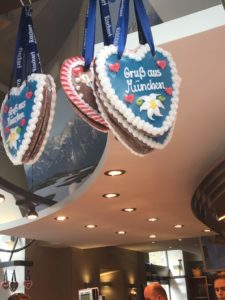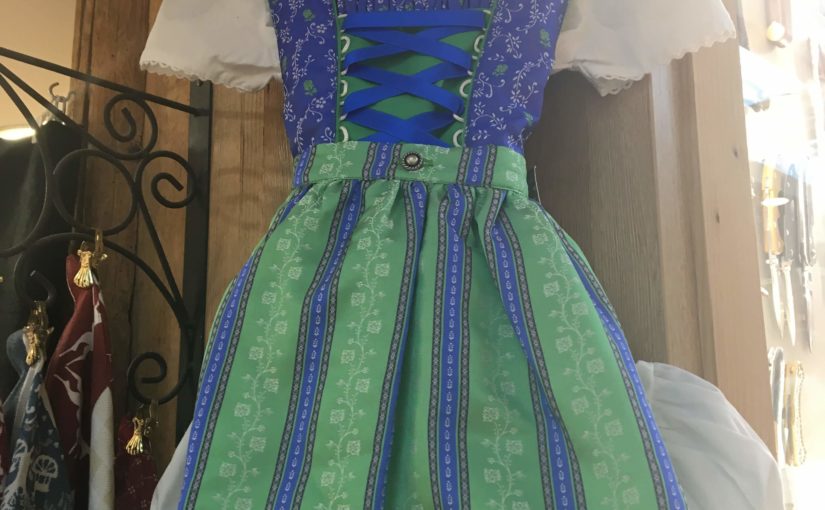I’ve heard Bavaria described as the Texas of Germany, and having been here three weeks, I believe it. The atmosphere here is incredibly different from that of a city like Berlin, where traditional German garb would be seen as out of touch kitschy. Here there’s a shop to buy a dirndl, traditional feminine German attire, and lederhosen, traditional masculine German attire, around every corner.

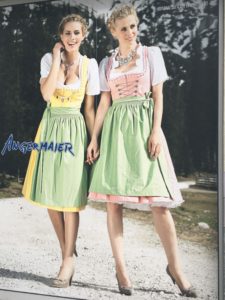
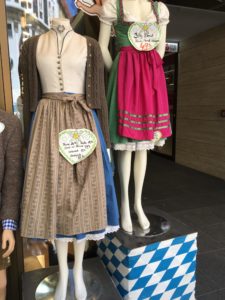
Not only are there more stores for this attire than one would know what to do with, but the people here actually wear these clothes. You can ride the subway alongside women wearing dirndls and groups of men wearing lederhosen any time of day.
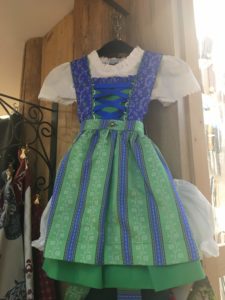
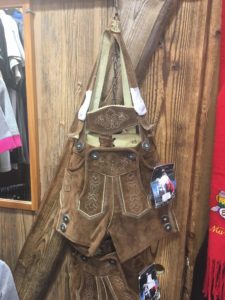
It seems that many jobs, such as waitressing at a traditional German restaurants, would require wearing a dirndl as a uniform. And yet more often than not, it seems that dirndls and lederhosen are worn for the fun of it. They aren’t looked down upon, in fact, quite the contrary: Thomas Müller, one of the star players on FC Bayern (Bayern’s soccer team, and perhaps Germany’s best team), wore a lederhosen to the Meisterfeier at Marienplatz (where the team presented the trophy to the fans).
In fact, a visit to the museum at Allianz Arena, where FC Bayern plays, revealed that the soccer team has a rich history of fashion. When the Bavarian players were made fun of for their lederhosen and traditional garb, they did not shy away from the clothing but embraced it as a part of their Bavarian identity, saying “Mia san mia” or “We are who we are.”
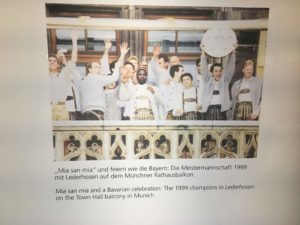
Traditional clothing isn’t something to look down on in Bavaria, but rather it’s something to be celebrated. Let the rest of Germany say what it will, but Bavaria is proud of their cultural identity and this piece of their history – they do not run from the past, like so much of Germany might appear to do. Dirndls would be embarrassing in the North if worn in earnest. But here in the south, traditional clothing so far from being a joke that you can wear them to church and not appear to be wearing a costume!
Bavaria has a very strong Catholic identity. Most all shops are closed on Sundays. On the Monday after Pentecost, school and work was closed, and on Corpus Christi, the whole city shut down. There was a large mass going on outside of the city Rathaus on Corpus Christi morning, and such a large group of people came that the crowd was gathered even where there was zero visibility, and you could only hear the mass. It appeared that many groups had made pilgrimages to come to this mass, and of these groups, many wore traditional German clothing. Even on an ordinary Sunday, large groups of people wear dirndls or lederhosen to church, at Asam Kirche, for example, where I saw a procession of people dressed traditionally exiting the church.

I find this contrast between Berlin and Bavaria to be intriguing. Even within the German culture there is great variation and an abundance of perspectives. While this can be observed through religious roots (Historically Catholic of Protestant) or regional dialect (Bairisch in Bavaria), the most readily noticeable difference in Bavaria is the attitude taken to traditional German clothing.
